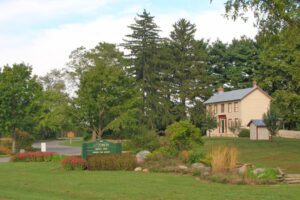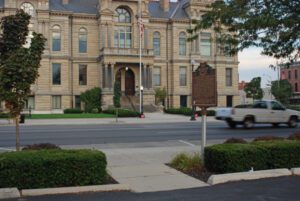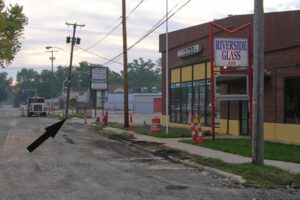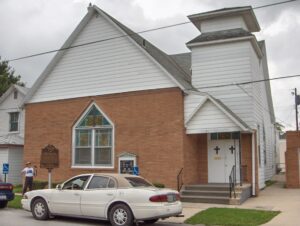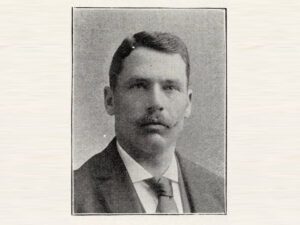, OH
This area of western Hancock County is a part of the Maumee River Watershed known as “Indian Green.” Wyandot Indians chose this area for hunting and ceremonial grounds along the Blanchard River in the 1700s because it was next to the river, yet high enough to avoid frequent flooding. One-half mile east of this location is a Liberty Township cemetery. It is located upon a sand ridge once used as a burial ground by Indians, hence the name “Indian Green.”
, OH
The Fugitive Slave Act of 1850 prompted an expansion of the “Underground Railroad,” and as the state spanning the shortest distance between the Ohio River and Canada, Ohio saw heavy traffic in escaping slaves in the decades before the Civil War. Hancock County was home to many sympathetic residents who defied fugitive slave laws to help conduct slaves to freedom. “Stationmasters” offered safe havens, “conductors” accompanied fugitives through the county, and “stockholders” provided financial support and misled pursuers. Known stations were located mainly along the Perrysburg Road, now U.S. Highway 68. (continued on other side)
, OH
In 1884, the first natural gas well was successfully drilled in Findlay, and when The Great Karg Well, then the largest in the world, was drilled in 1886, the boom was on. Many industries, especially glass, were attracted to Findlay, lured by free or cheap gas for fuel. They included eight window, two bottle, two chimney lamp, one light bulb, one novelty, and five tableware glass factories. Famed manufacturing pioneer and inventor Mike Owens (later associated with Owens Illinois) managed the Richardson Glass Works, located at this site in 1891-1892. Tableware glass companies included Bellaire Goblet (1888-1892), Columbia Glass (1886-1892), Dalzell, Gilmore & Leighton (1888-1901), Findlay Flint Glass (1889-1991), and Model Flint Glass (1888-1893). Tableware companies employed women as decorators and packers. Hundreds of skilled glassworkers came from the eastern states of America, as well as Europe, especially Belgium, France, and Germany. Bottle glassworkers were among the first workers to unionize and to use collective bargaining.
, OH
In spite of small numbers and being welcomed by the mostly white congregation of First Methodist Episcopal Church, African Americans in Findlay in the 1880s wanted to express their faith in ways that best reflected their freedoms and traditions. By the mid-1880s, the congregation was meeting in members’ homes and the Odd Fellows Hall, but began fund raising to build their own church in 1885. The congregation was admitted to the North Ohio Conference of the Third Episcopal District of the African Methodist Church in 1885, one of the first churches to be so admitted. The building on Liberty Street was well underway by the end of 1887 on a lot donated by Judge D. J. Cory. The original twenty foot by forty foot building cost $2,000 and immediately became a focal point for religion and social events for Findlay’s African American community. (Continued on other side)
, OH
William Ellsworth “Dummy” Hoy was born in Houcktown on May 23, 1862. Although spinal meningitis as a toddler left him deaf and mute, Hoy became one of the great 19th century professional baseball players. He played centerfield for such teams as the Chicago White Stockings, Louisville Colonels, and Cincinnati Reds. In his 1888 Washington Senators season he led the league with 82 stolen bases and is one of the all-time leaders in that art. The defensive star’s record includes: 3,959 outfield putouts; 73 double plays; 2,054 hits; 40 home runs; 597 stolen bases; and, 210 strike-outs. Hoy is a member of the American Athletic Association for the Deaf Hall of Fame, as well as those of the Cincinnati Reds, Ohio Baseball, and Ohio School for the Deaf. He died in Cincinnati at the age of 99.


